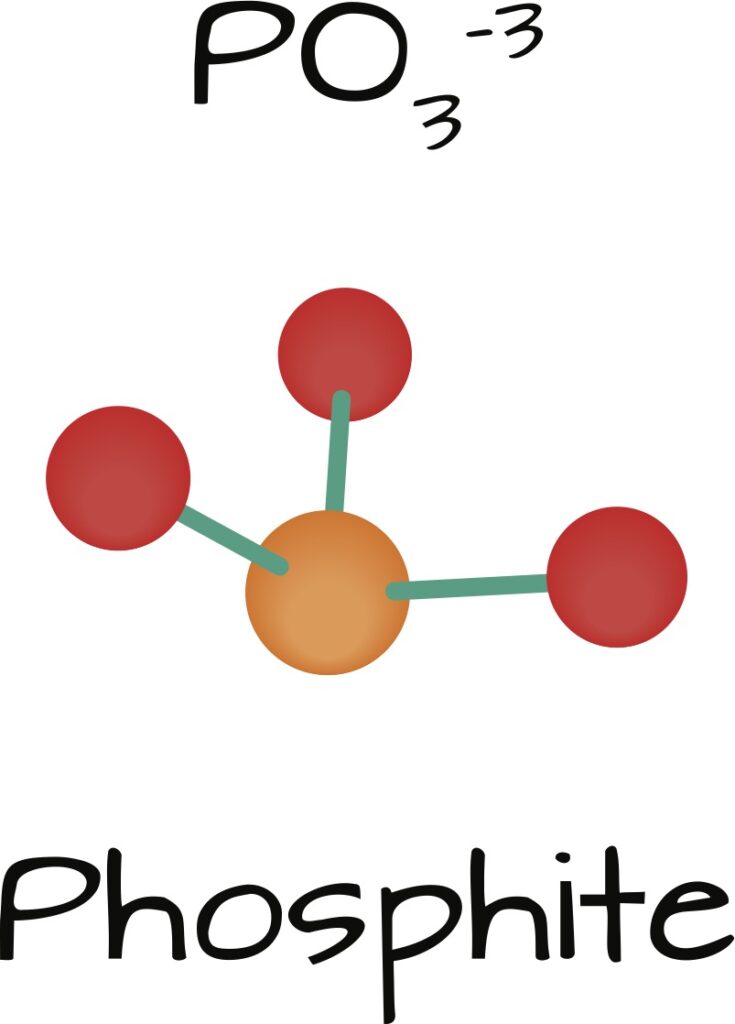Bowling greens are a unique and challenging environment for turf management. Greenkeepers are tasked with achieving an uncompromising standard of playability while working within the constraints of natural processes and environmental concerns. In recent years, phosphite has emerged as a valuable tool in the greenkeeper’s arsenal, offering benefits that go beyond traditional turf nutrition.
What is Phosphite?
Phosphite (PO₃³⁻) is a reduced form of phosphate (PO₄³⁻), the familiar phosphorus source in traditional fertilisers. Although the two compounds are chemically related, their behaviours in plants and soils differ significantly. Phosphite is highly soluble and readily absorbed through both roots and foliage, making it a highly efficient delivery mechanism for phosphorus-related benefits. However, it is important to note that phosphite itself does not act as a direct nutrient in the way phosphate does; instead, it has unique properties that enhance plant health and resilience.
Phosphite and Turf Health
One of the standout characteristics of phosphite is its role in strengthening the grass plant against biotic and abiotic stresses. While traditional phosphate fertilisers are essential for energy transfer and cellular functions, phosphite is a bio-stimulant that works on a different level—stimulating the plant’s natural defence systems and improving stress tolerance.
Disease Resistance
Phosphite has gained recognition for its ability to bolster turf’s natural defences against a range of plant diseases, including Pythium, anthracnose, and Microdochium nivale (fusarium patch). It does this by triggering systemic acquired resistance (SAR) and induced systemic resistance (ISR) within the plant. These defence mechanisms enable turf to produce phytoalexins and other protective compounds, reducing the likelihood of infection and limiting the spread of pathogens.
Stress Mitigation
Bowling greens are often subject to extreme stress, whether from frequent mowing, foot traffic, or environmental conditions such as heat, drought, cold and in 2024…too much rain!!. Phosphite has been shown to improve the turf’s physiological resilience to these stresses, helping the plant maintain vigour and recovery capacity during challenging periods.
Compatibility with Soil Health Goals
In greenkeeping we rightly and increasingly focus on long-term soil health, with an emphasis on balancing nutrient inputs and minimising environmental impact. Phosphite aligns well with these goals in the following ways:
- Efficient Uptake: Phosphite’s high solubility and mobility within plants mean that lower application rates can achieve significant results, reducing the risk of nutrient leaching or runoff.
- Low Phosphorus Load: Unlike traditional phosphate fertilisers, phosphite contains less phosphorus, making it ideal for use in sensitive environments where phosphorus levels need to be carefully managed.
- Synergy with Microbial Life: Phosphite has been observed to interact positively with beneficial soil microbes, enhancing nutrient cycling and overall soil health.
Practical Applications on Bowling Greens
For greenkeepers aiming to maximise the benefits of phosphite, it is important to integrate it strategically into a broader turf management programme. Phosphite applications are particularly effective during periods of stress or disease pressure, when the turf’s natural defences may need additional support.
- Effective for Foliar Application: Phosphite’s rapid absorption through leaves makes it an excellent candidate for foliar sprays, ensuring quick uptake and minimal wastage.
- Tank-Mix Friendly: Phosphite can be combined with many other turf care products, including fungicides, to enhance their efficacy or reduce the required dosage.
- Seasonal Use: Applying phosphite during periods of high disease risk or environmental stress, for example in autumn (fusarium) or summer (dollar spot and others) can help maintain healthy, resilient turf.
Phosphite represents an exciting opportunity for greenkeepers to enhance turf health and resilience through a science-driven approach. By understanding its unique properties and integrating it thoughtfully into maintenance programmes, we can boost disease and stress resistance in our turf without resorting to harmful pesticides.

